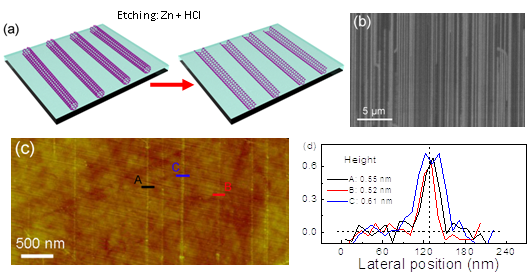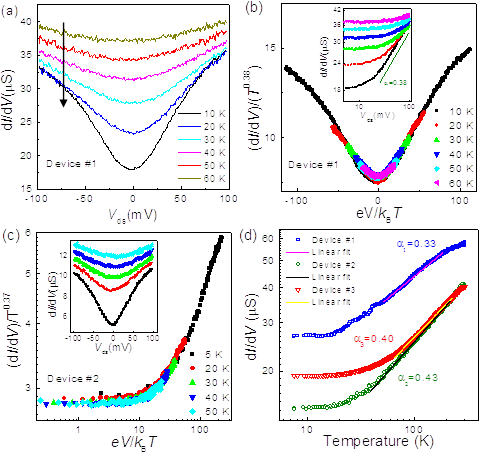Recently, GNR, a narrow stripe of graphene, has attracted intense interest for the fabrication of nanoscale devices because of its exotic electronic properties, such as edge states, size-confined energy quantization, and magnetic order. Currently, several approaches have been introduced to make GNRs. However, the reliable production of GNR arrays with narrow width less than 5 nm and smooth edges remains a significant challenge. In a series of one-dimensional (1D) systems, the interacting fermions exhibit collective excitation characteristics, known as Luttinger liquid (LL) behavior characterized by the power-law excitation spectra and the suppressed density of states near Fermi level. 1D zigzag GNRs are proposed to show ballistic transport properties; further, it is reasonable that such high-quality 1D GNRs could be expected to exhibit the LL behavior. However, no experimental evidence of the LL behavior in GNRs has yet been reported, because the intrinsic electronic transport properties of GNRs are smeared by overwhelming effects of large transport gap and Coulomb blockage due to the strong edge disorders.
Recently, Prof. LIU Liwei's group at Key Laboratory of Nanodevices and Applications, Suzhou Institute of Nano-Tech and Nano-Bionics (SINANO), Chinese Academy of Sciences (CAS), in collaboration with LV Li's group at Institute of Physics, CAS, has successfully fabricate high-quality GNRs arrays with low in-plane and edges disorders by unzipping well-aligned single-walled carbon nanotubes (SWNTs) using a different chemical route. The work presents interesting electronic transport properties that LL behavior.in the GNRs. These findings are significant to the understanding new electronic states in 1D GNRs and the future GNRs electronic applications. This work has been published on Phys. Rev. B 87, 165404 (2013).
The work was supported by National Natural Science Foundation of China, and Ministry of National Science and Technology Projects of China. The project also got assistance from the Nanofabrication Facility and Platform of Characterization & Test of SINANO.

Figure 1. Schematic representation of the fabrication process of GNR arrays by unzipping parallel SWNTs.(Image by SINANO)

Figure 2. The differential conductance (dI/dV) as a function of bias voltage (Vds) and temperature (T) show power-law behavior of LL..(Image by SINANO)
downloadFile
